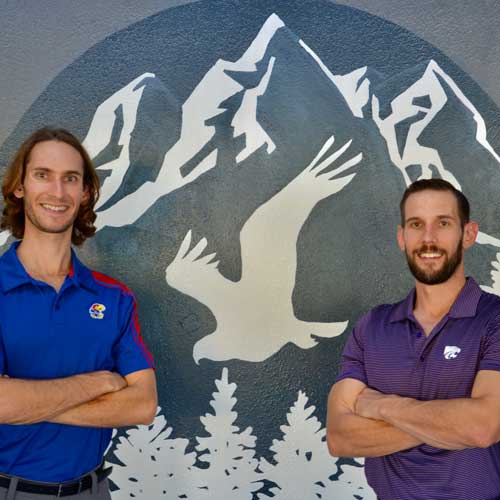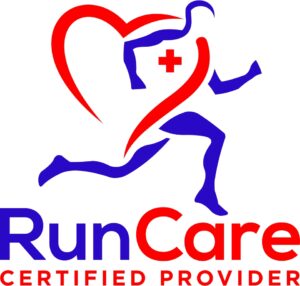
Introduction
Running is a popular and energizing exercise with many health advantages. Nevertheless, it carries the risk of foot injuries from running, which are common among runners. For both seasoned marathoners and beginners, knowing foot anatomy, identifying possible injuries, and understanding prevention and treatment methods, including runner’s knee physical therapy prevention, are essential to staying injury-free and active.
Anatomy of the Foot and Its Role in Running
Before exploring the realm of foot pain and running injuries in runners, it’s crucial to understand the intricacies of the foot’s anatomy and its vital role in the running process. The human foot features a complex network of bones, muscles, tendons, and ligaments that function together to provide stability, propulsion, and shock absorption during each stride.
Common Foot Injuries in Runners
According to Science Direct research, common running foot injuries can vary in severity from minor annoyances to significant setbacks. Here are some of the most prevalent foot injuries in runners:
Plantar Fasciitis
Arch pain, a discomforting condition, results from inflammation of the thick tissue band situated along the bottom of the foot, referred to as the foot arch. This condition results in sharp heel pain, especially in the morning or after rest.
Stress Fractures
Stress fractures, often caused by training errors, are small bone cracks in the foot. They result from overuse or sudden increases in training intensity and can be very painful. These fractures differ from acute fractures in that they develop gradually due to repetitive stress.
Achilles Tendinitis
It makes up about 7% of running-related injuries, and it is caused by overuse or poor running form, which inflames the Achilles tendon at the ankle’s back, leading to pain and stiffness in the lower calf and ankle region.
Blisters
Common running injuries, often triggered by friction between the skin and shoes, can become recurring issues if not addressed properly. Finding the perfect shoe and following the right rule for running shoes is essential.
Bunions
Bunions are bony protrusions that typically develop at the base of the big toe, which leads to discomfort and pain for runners. They can be exacerbated by ill-fitting footwear. Choosing the right guide to running shoes is crucial in addressing this issue.
Metatarsalgia
Causing sharp pain in runners stems from inflammation in the ball of the foot, particularly under the metatarsal bones, often exacerbated by running distance. This increases injury risk and makes running uncomfortable and challenging.
Ankle Sprains
Ankle sprains, one of the common injuries among trail runners, happen when the ligaments supporting the ankle are stretched or torn. Without prompt treatment, they can lead to instability and prolonged recovery.
Prevention Strategies
While foot injuries, particularly running injuries foot, pose a risk during runners’ training sessions, there are proactive steps you can take to prevent running injuries and minimize the chances of facing these problems:
Proper Footwear
- Fit and Support: Ensure shoes fit well and provide proper arch support, especially for those with flat feet, for comfort and avoid risk of injury.
- Right Type for Your Gait: Choose shoes tailored to your pronation type (neutral, overpronation, or supination) to maintain stability, support the plantar fascia, and prevent discomfort.
- Replace Regularly: Change running shoes every 300-500 miles or 6-12 months, which is especially crucial for long-distance runners to maintain cushioning and support.
Training Techniques

- Gradual Progression: Use the 10-percent guideline, gradually increasing your weekly training mileage, but never by more than 10 percent per week.
- Cross-Training: Incorporate other forms of exercise like swimming, cycling, or strength training to reduce the risk of repetitive strain and improve overall fitness.
- Rest and Recovery: Allocate adequate time for rest between runs to allow muscles and tissues to heal. Listen to your body, and don’t push through pain or fatigue to prevent injuries.
Stretching and Strengthening
- Foot and Ankle Exercises: Incorporate specific exercises that target the muscles and flexibility of your feet and ankles. This helps improve stability and reduce the risk of injuries.
- Stretching: Regularly stretch the muscles in your legs, calves, and feet to maintain flexibility. This can alleviate tension and decrease the likelihood of strains or sprains.
Proper Running Techniques
- Form: Maintaining proper running form, characterized by an upright posture, relaxed shoulders, and a natural stride, helps reduce stress on your feet and lowers the risk of injuries.
- Surface Variety: Change your running surfaces to prevent overuse injuries. Switch between roads, trails, and softer grass to reduce repetitive impact on your feet and legs, improving overall foot health.
Listen to Your Body
- Pain is a Warning: Pain serves as your body’s signal that something could be amiss, occasionally accompanied by an increased heart rate. Disregarding it may result in more severe injuries.
- Seek Professional Help: For persistent or severe pain, consult a healthcare or sports specialist promptly to prevent minor issues from affecting your running performance.
Treatment Approaches for Foot Injuries
In the unfortunate event of a foot injury, it’s crucial to follow appropriate treatment protocols:
- Rest: Allow your injured foot time to heal by reducing or avoiding activities that exacerbate the condition, a common approach to addressing overuse injuries.
- Ice: Apply ice to reduce swelling and alleviate pain, a standard practice in managing soft tissue injuries. Use a cold pack for 15-20 minutes at a time, several times a day.
- Compression: Use a compression bandage or wrap, and consider utilizing a foam roller to minimize swelling and provide support.
- Elevation: Raise your injured foot above heart level when resting, a practice supported by prospective studies, to reduce swelling effectively.
- Pain Relief: Over-the-counter medications such as pain relievers can help alleviate discomfort. Consult a healthcare professional for appropriate medication.
- Physical Therapy: A qualified medical professional can provide specialized exercises and techniques to aid recovery and prevent future injuries.
- Orthotic Devices: Custom or over-the-counter orthotic foot inserts can provide extra support and alignment for your feet, addressing various foot conditions.
- Surgery: In severe cases, surgery, as recommended by a healthcare provider, may be necessary to repair damaged tissues or correct deformities.
- Rehabilitation Exercises: Follow a structured exercise program, often prescribed by sports medicine experts, to regain strength and mobility in your foot during recovery.
Maintaining Healthy Feet with Wild Hawk Physical Therapy
Wild Hawk Physical Therapy specializes in aiding runners in overcoming foot injuries, including ankle pain from shoes, and provides customized rehabilitation programs to return you to your active lifestyle swiftly. Contact us today to get back on your feet and back in action!
Conclusion
Running can be an exhilarating and rewarding pursuit, but it’s essential to know the potential for foot injuries and how to prevent and treat them. By understanding the anatomy of the foot, practicing injury prevention strategies, and seeking professional help when needed, you can enjoy a long and injury-free running journey.
FAQs
Q1: How do you heal a running foot injury?
A1: Healing a running foot injury often involves a combination of rest, ice, compression, elevation, and pain relief measures. Physical therapy, orthotic devices, and sometimes surgery may be necessary for more severe injuries.
Q2: How do you prevent ankle injuries when running?
A2: Preventing ankle injuries while running involves maintaining proper form, using supportive footwear, and strengthening the ankle through targeted exercises. Varying running surfaces can also reduce the risk of overuse injuries.
Q3: How does mobility prevent injury?
A3: Improving mobility through stretching and flexibility exercises can prevent injuries by reducing muscle imbalances and enhancing the body’s ability to absorb shock and adapt to the demands of running.










